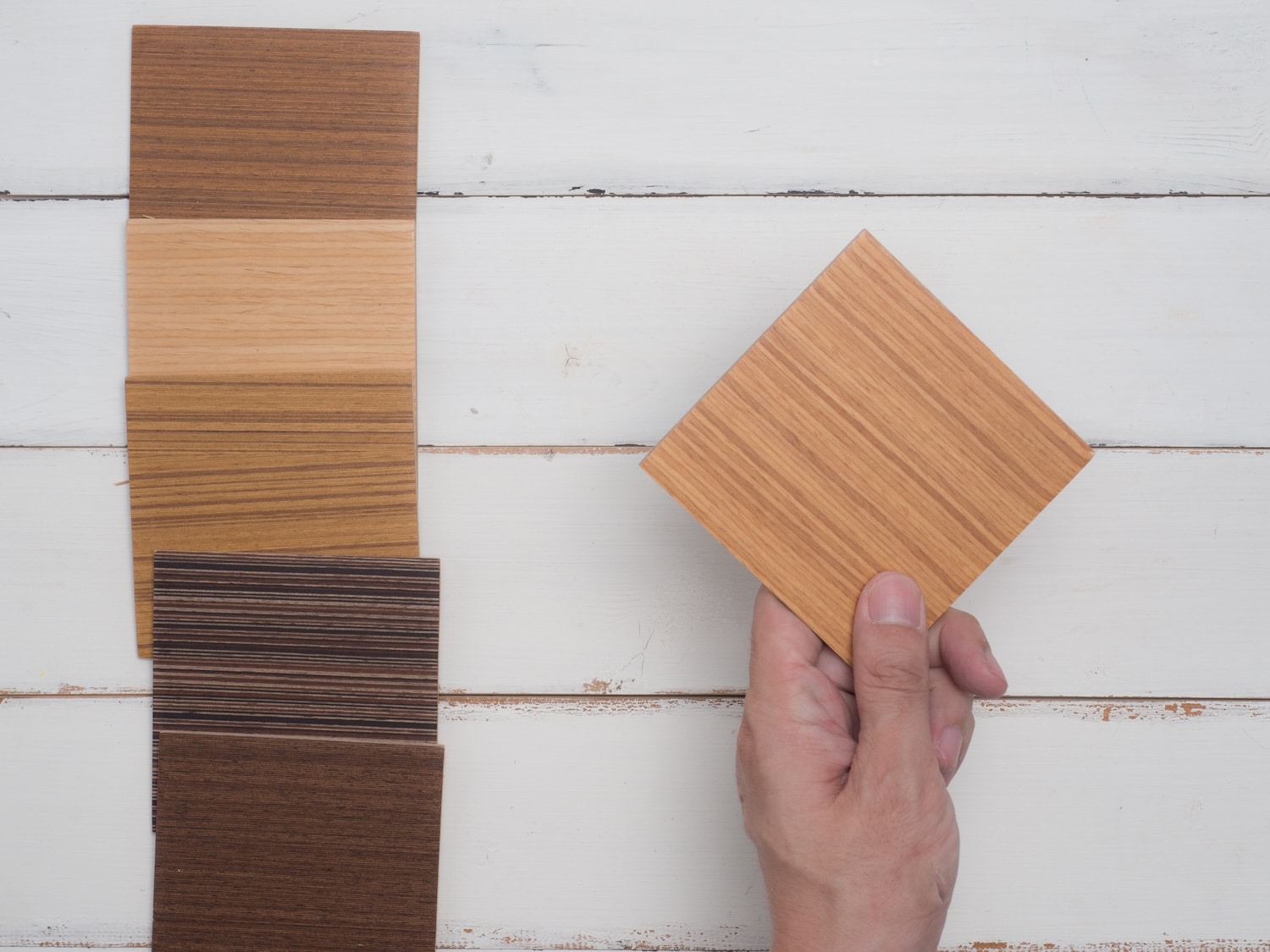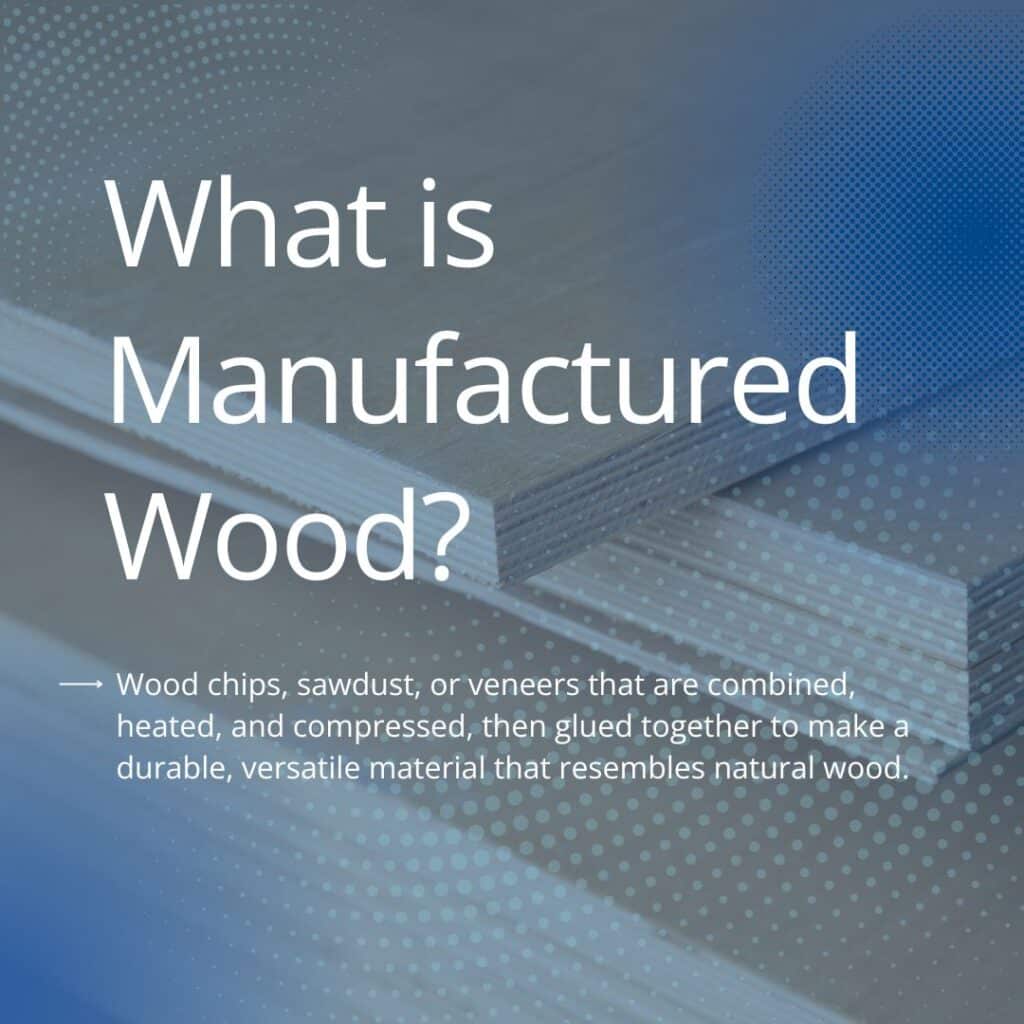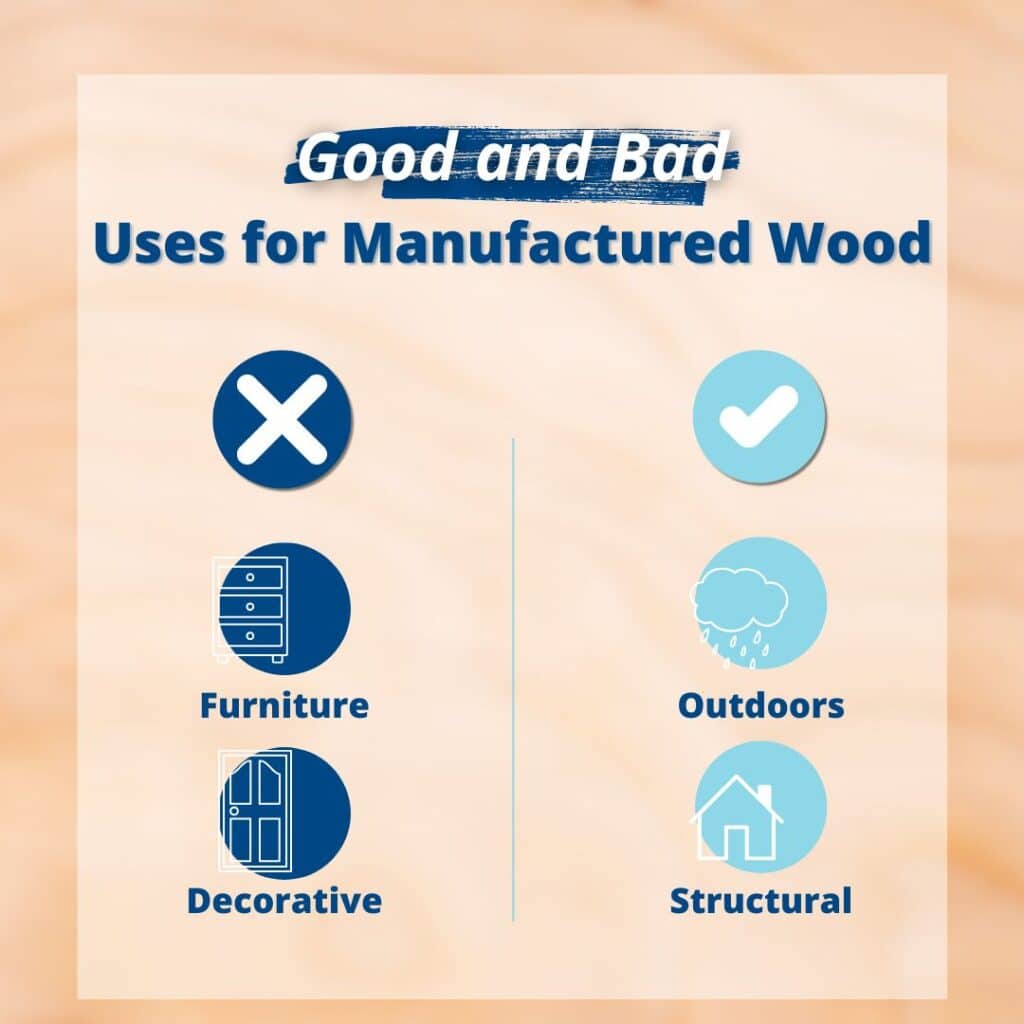
Manufactured wood is everywhere—from kitchen cabinets to flooring—but knowing when it’s a smart choice and when it’s not can help you prevent expensive, unpleasant surprises later.
If you’re buying a home, planning renovations, or just curious about manufactured wood as a construction material, understanding how it holds up in different situations matters more than some might think. Some uses make perfect sense, and manufactured wood offers affordability or versatility, but others can lead to trouble—this is your guide to knowing the difference.
What is Manufactured Wood?
The term refers to wood products engineered from wood fibers, particles, or veneers bonded with adhesives.
Unlike solid wood, it’s designed to make efficient use of raw materials while offering a variety of options for construction and furniture.
Common types include:
- Plywood: Layers of wood veneer glued together, known for strength and versatility.
- Medium-Density Fiberboard (MDF): Fine wood fibers compressed into dense panels, ideal for painted surfaces.
- Particle Board: Wood chips bonded with resin; cost-effective but less durable.
- Engineered Wood: A broad category including products like laminated veneer lumber (LVL), used for specific structural purposes.
Manufactured wood is common in homes and is often used where budget-friendly, uniform materials are preferred.

When it Works Well
Manufactured wood shines in many household applications where strength and weather resistance aren’t primary concerns.
Its affordability and adaptability make it a practical choice for things like:
- Furniture: Dressers, shelves, and tables often use particle board or MDF for cost-effective production.
- Cabinetry: Kitchen and bathroom cabinets frequently feature plywood or MDF for smooth finishes and paintability.
- Flooring: Engineered wood flooring provides a wood-like appearance at a lower cost and can resist minor temperature fluctuations.
- Decorative Elements: Crown molding, trim, and other non-structural features benefit from MDF’s smooth surface.
These uses work well because manufactured wood offers consistent sizing, easy workability, and options that mimic the look of solid wood without the same price tag.
When Manufactured Wood Falls Short
Despite its benefits, manufactured wood isn’t suitable for every application. Problems arise when it’s used in places where moisture, weight, or wear are factors. Homeowners should be cautious about using it in these spaces and cases.
- High-Moisture Areas: Bathrooms, laundry rooms, and basements can expose manufactured wood to moisture, causing swelling or warping.
- Outdoor Use: Unless specially treated, manufactured wood deteriorates quickly when exposed to rain, humidity, and temperature shifts.
- Structural Applications: Particle board and MDF lack the strength needed for load-bearing walls or heavy shelving.
- Heavy Traffic Flooring: Cheaper engineered wood may scratch or wear down faster under constant foot traffic.
Why It Matters During a Home Inspection
When buying or selling a home, manufactured wood can raise concerns depending on where and how it’s used.
Home inspectors pay attention to signs of:
- Moisture Damage: Swollen cabinets, soft spots in flooring, or crumbling trim often indicate water exposure.
- Hidden Structural Issues: If it was incorrectly used in framing or support beams, it may fail to meet safety standards.
- Deterioration: Peeling veneer or delamination shows aging materials that might need replacement.
- Improper Installation: Gaps, sagging shelves, or loose fixtures signal shortcuts that could affect longevity.
Identifying these issues early helps homeowners avoid unexpected expenses and ensures the home is safe and functional.

Tips for Maintaining Manufactured Wood
While manufactured wood isn’t as durable as solid wood, proper care can extend its life. Here are simple maintenance tips:
- Keep It Dry: Wipe up spills promptly and avoid using it in damp environments without proper sealing.
- Clean Gently: Use soft cloths and mild cleaners to prevent surface damage.
- Protect Surfaces: Add coasters, placemats, or felt pads to minimize scratches.
- Monitor for Wear: Regularly check for signs of peeling, swelling, or other damage.
- Avoid Excessive Weight: Don’t overload shelves or furniture made from weaker manufactured wood varieties.
Following these practices helps maintain its appearance and functionality over time.
When to Call a Professional
It’s wise to call a professional home inspector if you notice damage to manufactured wood components or suspect they’ve been used improperly.
An inspection can reveal:
- Hidden moisture issues beneath flooring or behind cabinetry
- Structural concerns if it was used where solid wood or metal supports are required
- Safety hazards from deteriorating or poorly installed materials
Professional insight ensures you address problems before they worsen, saving you from more significant repairs later.
Conclusion
Manufactured wood serves many practical purposes in homes, offering cost-effective solutions for furniture, cabinetry, and decorative touches. Yet, it has its limits.
Understanding where it excels and where it falls short helps you make informed decisions, whether you’re inspecting a property or planning upgrades. If you’re unsure about the condition or materials anywhere in your home, schedule a professional inspection with Boggs Inspection Services in Olympia, WA, and surrounding areas.



